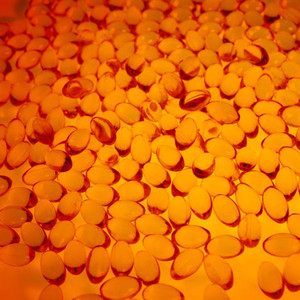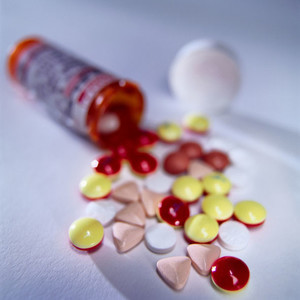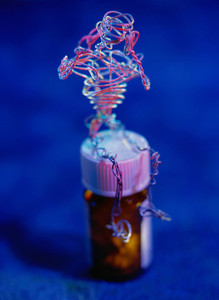The Brazilian pharmaceutical market is the third largest in the Americas region, after Canada and USA, it ranks first in the Latin American region. Pharmaceutical demand will continue to rise, fuelled by increasing disposable income, therefore, the market outlook is positive for the 2011–2016 period.
Historical background
Since the early 1990s, South America in general has been turning towards democracy and government in the interests of the people, compared with the ‘banana republics’ of yesteryear. Generics consumption in Latin America is still low, but Brazil is leading the way with a dynamic generics sector. In attempts to bring medicines within reach of ordinary people, the government has been pursuing a policy of low prices, a home-grown industry and disregard for some patents. The government attempt to kick-start availability of health care has probably contributed to the general blossoming of the economy in this country.
Since the introduction of generic drugs in Brazil in 2001, the country’s pharmaceutical industry has undergone a transformation. This has increased general availability of many medicines, despite Big Pharma’s threats to reduce their investments in Brazil’s pharmaceutical sector. Generic drugs have been steadily gaining market share and in 2006 represented 11.6% of total production. Generics are expected to have a pharmacy market share of 20.0% by value and 25.0% by volume in 2011.
The influence of major multinational drug companies did decline as a result of these policies. However, the economy is doing so well now in Brazil that health care is becoming affordable to many more people. Considering the large potential market and finding it attractive compared with the stagnating economies of Europe and North America, foreign producers have penetrated in the last two years what, until then, had been considered a tough sector. Major developments include Pfizer’s purchase of 40% of the Brazilian generics producer Laboratorio Teuto Brasileiro in November 2010 [1], Valeant’s acquisitions of two private branded generics and OTC pharmaceutical companies in the first half of 2010, and Sanofi's acquisition of the largest local generics company Medley in 2009. As a result, multinationals represented over 40% of the generics sector in 2010, compared to 12% in 2008. This wave of acquisitions is a blow for the government, which aims to create a leading local pharmaceutical group able to compete internationally.
Acquisitions in 2011
Competition among the five leading pharmacy chains is fierce, and the sector has been consolidated by a recent wave of mergers. In September 2011, Drogaria São Paulo, the leader in the state of São Paulo; and Drogarias Pacheco, the leader in Rio de Janeiro; announced a merger, creating what will be the largest pharmacy chain in Brazil – DPSP. This merger took place after the merger between Drogasil and Droga Raia, announced in August 2011, creating the second largest pharmacy chain, Raia Drogasil.
Major developments in 2011 include Aspen’s acquisition of six medicines owned by a local company in August 2011; Prazzi-Donaduzzi’s plans to increase production, announced in July 2011; a distribution agreement between Novartis’ Sandoz and Sanofi’s Medley, valid from June 2011; and Stride Arcolab’s joint venture with a local company, announced in January 2011.
Local producers have increased their investments to strengthen their position. Aché, which lost the race to acquire Mantecorp but acquired 50% of Melcon in November 2010, tried to form a joint venture with GlaxoSmithKline in 2011, but this has been aborted. Biolab established an R & D unit in 2010. Cristália signed an agreement to purchase an Argentine company in September 2011. Additionally, the company signed a joint venture with Eurofarma to launch Supera in August 2011. EMS has announced investments of Brazilian Real (R$) 36 million (US$205.3 million) in three new manufacturing plants. Eurofarma announced the acquisition of Segmenta in December 2010. The company also invested R$450 million (US$233.2 million) in its manufacturing complex in 2010. Additionally, Eurofarma strengthened its international position in 2009–2010. Hypermarcas reorganised its business units in August 2011, following a number of recent acquisitions, the most notable being that of Mantecorp.
Biologicals also represented
The Brazilian Health Authority ANVISA (Agência National de Vigilância Sanitária) published a new regulation for biological products in December 2010. Several local companies have recently announced plans to strengthen their capabilities: Biomm plans to start the construction of an insulin plant in 2012; Halex Istar inaugurated a manufacturing unit for the production of sera in September 2011; and Hebron, which inaugurated a subsidiary in the US in August 2011, plans to start the construction of a haemo-derivatives manufacturing plant in 2012. In September 2011, EMS also signed a product licensing agreement with the South Korean company ISU ABXIS. Foreign companies have also showed interest in the biologicals market. Amgen, for example, acquired a local producer in April 2011, and reacquired a number of products previously licensed to Mantercorp, which was acquired by Hypermarcas in January 2011. Novartis, via Sandoz, plans to launch the biosimilar Omnitrope in 2011.
Conclusion
Strong pharmaceutical market growth opportunities and regulatory developments are making Latin America more attractive. The region needs to increase drug access. Therefore, attractive opportunities for (bio)pharmaceutical producers exist in Latin America. Brazil has the largest pharmaceutical market. Strong economic performance will fuel pharmacy sales growth in the forecast period. Mexico is the second leading market. Recent regulatory developments will create further market opportunities in the country, particularly for generics producers in both the private and public sectors. In Argentina, the pharmaceutical industry is expected to perform well in the coming years, with strong growth in production, sales, exports and employment.
In Mexico, the number of people accessing public health care will increase as the country introduces universal health coverage, which means that some private pharmacy consumption will be transferred to the increasingly attractive public sector. Growth in the private pharmacy sector, therefore, is expected to be more moderate in the forecast period. Fuelled by the current economic slowdown and new regulatory measures, generics penetration in the pharmacy sector will increase and contain the private pharmacy sector by value. Strategically, Sanofi already acquired the local generics producer Kendrick in 2009, whilst Valeant acquired Tecnofarma. The number of opportunities will be squeezed but the pharmaceutical market is large enough to be attractive in the long term.
Global pharma players continue to penetrate the burgeoning emerging markets by acquisition of domestic generics and manufacturing companies.
Related articles
Opportunities for biosimilars in emerging markets
Brazil to manufacture biosimilar adalimumab
Reference
1. GaBI Online - Generics and Biosimilars Initiative. Pfizer buys 40% stake in Brazilian generics’ manufacturer Teuto [www.gabionline.net]. Mol, Belgium: Pro Pharma Communications International; [cited 2011 December 09]. Available from: www.gabionline.net/Pharma-News/Pfizer-buys-40-stake-in-Brazilian-generics-manufacturer-Teuto








 0
0











Post your comment